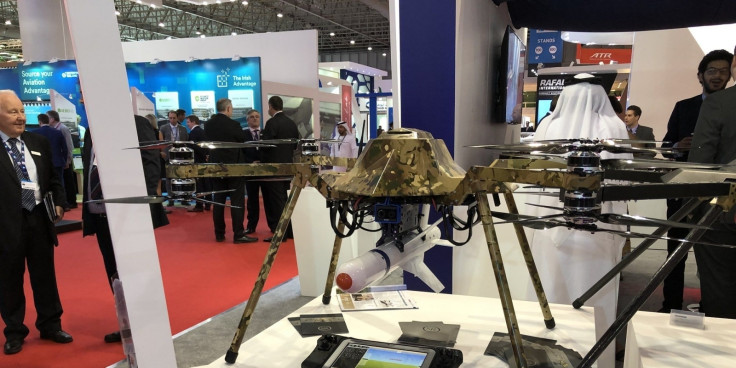Military grade, untraceable killer drones that fire small guided missiles now available
The drone can fly at an altitude of 1,000 feet and carry precision-guided munitions.

Velvet Wasp, a drone made by UK-based defence contractor Steel Rock, is a weapon of war that can be handled by a two-person team and can fire precision-guided ammunition at moving targets.
Velvet Wasp was unveiled this year at the 2017 Dubai Air Show and going by the specifications provided by its makers it could be quite leathal.
The drone comes at a time when dangerous weapons are getting more accessible and there are growing concerns over weaponising drones. Recent reports about drug cartels hauling "potato bombs" at each other using drones caused a stir. The report mentioned that gang members had with them small drones with remote detonators that dropped bombs over their enemies. Velvet Wasp is seen as a high-tech military version of it.
While the makers of Velvet Wasp insist that it is only for governments to use and that too only by militaries approved of by the UK, it might not be far-fetched to imagine it falling into unscrupulous hands and the dangers that weapons like these pose. While this can be said of any weapon, drones have their own unique set of challenges in terms of safety and security.
The Velvet Wasp is small enough to be loaded on to the back of a truck and can even be folded up to save space. Made of carbon fibre, the drone weighs no more than 10 kg; fully loaded with ammunition, the drone weighs about 30 kg. The drone has eight propellers and can cruise at speeds of up to 80kmph for a range of around 100km.
Apart from bombs and guided missiles, the drone can also carry first-aid, assist in reconnaissance, and make ammo drops as needed, reports Popular Mechanics. The drone is ideally handled by a two-person crew - a pilot and a navigator. However, it is also possible for the Wasp to be operated by one person.
Flying at 1,000 feet, it is small enough to be difficult to catch by radar. Using laser-guided designation systems, the drone can hit targets with enhanced precision in various conditions. Steel Rock says the drone can be flown through winds of up to 92 kmh.
Velvet Wasp was showcased carrying the Textron Fury. Fury is a weapons system that can be launched from the drone's Harris Hornet missile release. It can be directed using the drone's onboard laser, GPS, and inertial navigation systems. At 13 pounds, Fury is a small piece of ordnance, but it can hit moving targets within three feet, so it can be useful in taking out targets like vehicles or in tight urban spaces.
Makers of the drone say that Wasp cannot be hacked and that control signals are encrypted.
It is not clear at this point of time if Steel Rock will be adding artificial intelligence (AI)-based control systems to its drones. There is also no indication of how much the drone will cost to buy.
There are gun-toting versions of the drone as well, called the SR WO3 which has been built to specifically disarm improvised explosive devices (IED). Videos put out by the makers show a drone "disrupting" an IED by firing at its batteries and neutralising it.
The threat of militarising drones has always been looming over governments and countries ever since batteries got more powerful and drone technology became more reliable. AI-based drones are being worked on by governments including the US and Russia. Recently, reports about a gun-toting drone system that could handle snipers and move in swarms was published.
At a time when advocacy groups and heads of technology companies are calling for a ban on killer robots, one of the main concerns are flying, gun and bomb carrying drones that can decide whether or not to kill for themselves. Recently, a short film on the dangers of such weapons was screened at the UN. Regulation, however, seems a distant prospect.





















